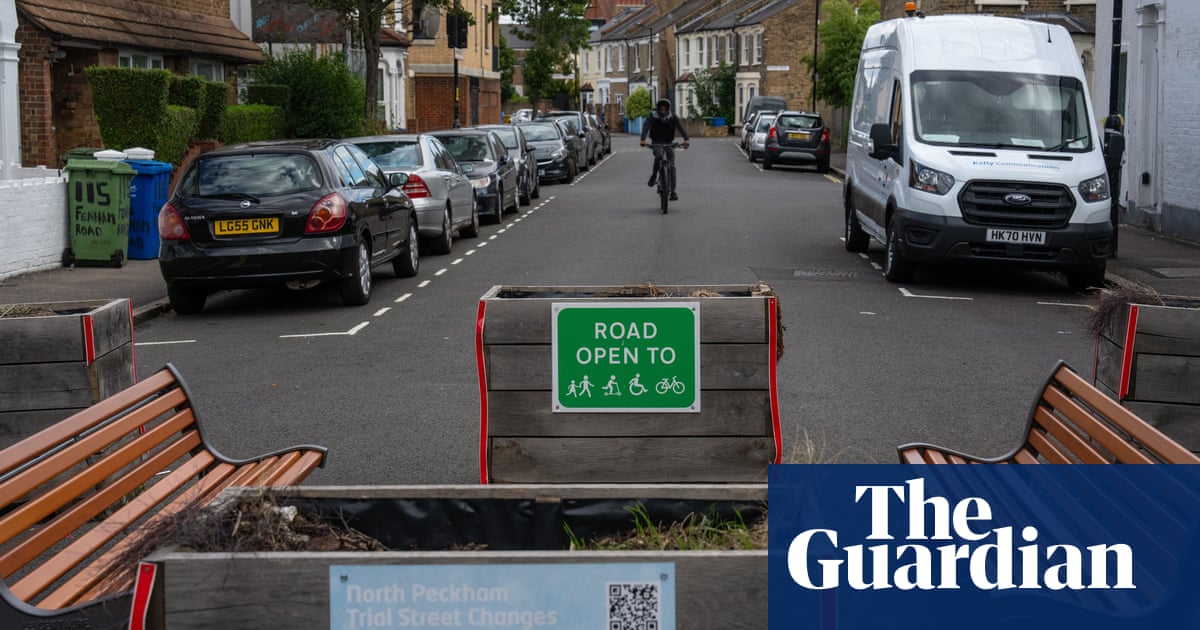
Schemes to promote cycling and walking condemned by some critics as controversial and unpopular actually appear to be welcomed by many voters, according to analysis of last month’s election results in London.
Examination of the London mayoral election on 6 May on a ward-level basis showed that votes for parties that support such projects tended to rise in areas where they had been introduced, while parties that opposed them were more likely to shed votes.
The analysis was carried out by Julian Bell, who was the Labour leader of Ealing council in west London for 11 years until being replaced after last month’s local elections. Under Bell’s leadership, Ealing trialled several so-called low-traffic neighbourhoods (LTNs), one of which has since been removed.
The LTN scheme promotes walking and cycling by using planters or bollards to make some residential streets access-only for motor traffic, while allowing pedestrians and cyclists to use them as normal. While there is evidence the schemes can, over time, reduce the overall number of shorter car trips, some opponents claim they increase congestion by pushing through motor traffic on to a smaller number of streets.
Bell’s analysis showed that in five Ealing wards where LTNs had been created, campaigns against them by the Conservatives and local Liberal Democrats – including a specifically anti-LTN visit by the unsuccessful Tory mayoral hopeful Shaun Bailey – appeared to achieve little.
While the overall Conservative mayoral vote across Ealing rose by 0.64 percentage points compared with the 2016 mayoral election, it fell across the five LTN-focused wards, as did support for the Lib Dems.
Labour was strongly in favour of the schemes, both through the re-elected mayor, Sadiq Khan, and the local council. While the party’s vote dropped in the five wards, it fell less than the borough-wide average, and it took the most first-preference votes in all of them.
Across the wards, more than 50% of voters opted for Labour or the Greens, both which back LTNs. This effect was magnified when second-preference votes were included – the London mayoralty election uses a supplementary vote system, giving people a first and second choice.
According to Bell’s analysis, a similar pattern was seen in other areas where Conservatives campaigned against cycling and walking schemes.
Across the west London borough of Hounslow as a whole, the Tory vote rose by 1.2 percentage points against 2016, while Labour’s fell by more than 4 points. But in three wards in Chiswick, along the route of the new CS9 segregated track on Chiswick High Road, bitterly opposed by the local Tories and by Bailey personally, the Conservative vote dropped by between 10 and 12 percentage points, while Labour’s vote in the wards rose by 4.4 points.
It was a similar picture in Kensington, where the Conservative-run council removed a separated cycle lane on Kensington High Street just seven weeks after it was installed.
Borough wide, the Conservative vote was down 11 points on 2016, with Labour up 2.2 points. But in the four wards covering Kensington High Street, Tory support dropped by an average of nearly 17 points, while Labour’s was up 6.7 points.
Writing for the Guardian about the research, Bell said: “What does seem quite clear is that in a bad year for Labour, cycle schemes saved or won votes for us, not lost them. And that if there was any ‘controversy’, it worked largely in our favour.”












